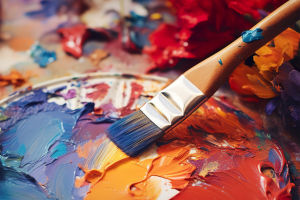Hey Lykkers, have you ever stood in front of a beautiful scene, holding a camera, and wondered whether film or digital would capture it better? We've all been there.
Cameras are more than just gadgets—they're memory-keepers. As we look at the differences between film and digital cameras, let's uncover which one fits us best in today's fast-paced world.
Understanding the Basics: Two Main Camera Types
We mainly deal with two types of cameras: film cameras and digital cameras. Film cameras are the classic kind that use rolls of film to capture images. To see the final photo, we need to develop the film through chemical processing, which also means extra costs—for film, developing, and printing.
On the other hand, digital cameras are modern, convenient, and widely used. They don't require film and can take hundreds—even thousands—of photos stored on a memory card. This makes digital shooting cheaper and more flexible in the long run, especially when paired with storage devices or computers.
The Magic Behind the Image: How Each Camera Works
How do these two types of cameras form an image? Film cameras use light-sensitive film. When light enters the lens, it hits the film and leaves a chemical imprint, which is later processed to produce an image.
Digital cameras, however, use sensors—usually CCD or CMOS chips—to capture the light and convert it into digital signals. These signals are stored as image files, ready to view instantly. This difference in imaging technology not only affects how we use the camera but also how we interact with the results.
Shooting and Processing: Which Is More Practical?
Using a film camera often feels like a slow art form. After taking the shot, we can't see the result immediately. We need to wait until the film is developed to know how it turned out. This requires both time and professional equipment or service.
With digital cameras, things are way simpler. We can check photos right after taking them on the LCD screen. If we don't like them, we delete and retake. Editing is easier too—basic software can help us crop, adjust light, or even apply filters in minutes. This real-time flexibility helps us create better images with less stress.
Photo Quality: What Really Makes the Difference?
Photo quality is a big concern for all of us. In film cameras, it depends on several things: the type of film used, lens quality, and the photographer's skill. It's a more technical process where each step matters a lot.
With digital cameras, quality also depends on the lens and the user's experience, but the process is generally more forgiving. We can see results instantly, adjust camera settings, and even fix mistakes afterward using editing tools. That means we have more control and less room for errors.
Which One Should We Choose?
So, what's the verdict? If we love the nostalgic feel of analog, the excitement of waiting for developed photos, and the charm of old-school photography, film cameras definitely bring that magic. But if we prefer speed, convenience, and efficiency, digital cameras win in most everyday situations.
In fact, many photographers use both. Film for special projects or artistic shots, digital for events and fast-paced needs. It's not really about which is better—it's about what we want to express and how.
Capturing Moments, Our Way
Dear Lykkers, every time we press the shutter, we're saving a piece of life—something real, something meaningful. Some of us love the textured, timeless charm of film, while others enjoy the instant results and flexibility of digital. Both paths let us explore the world through our own lens and style.
So, which one speaks to you more? Are you drawn to the classic feel of film or the modern convenience of digital? Share your thoughts with us—we'd love to hear your take!


